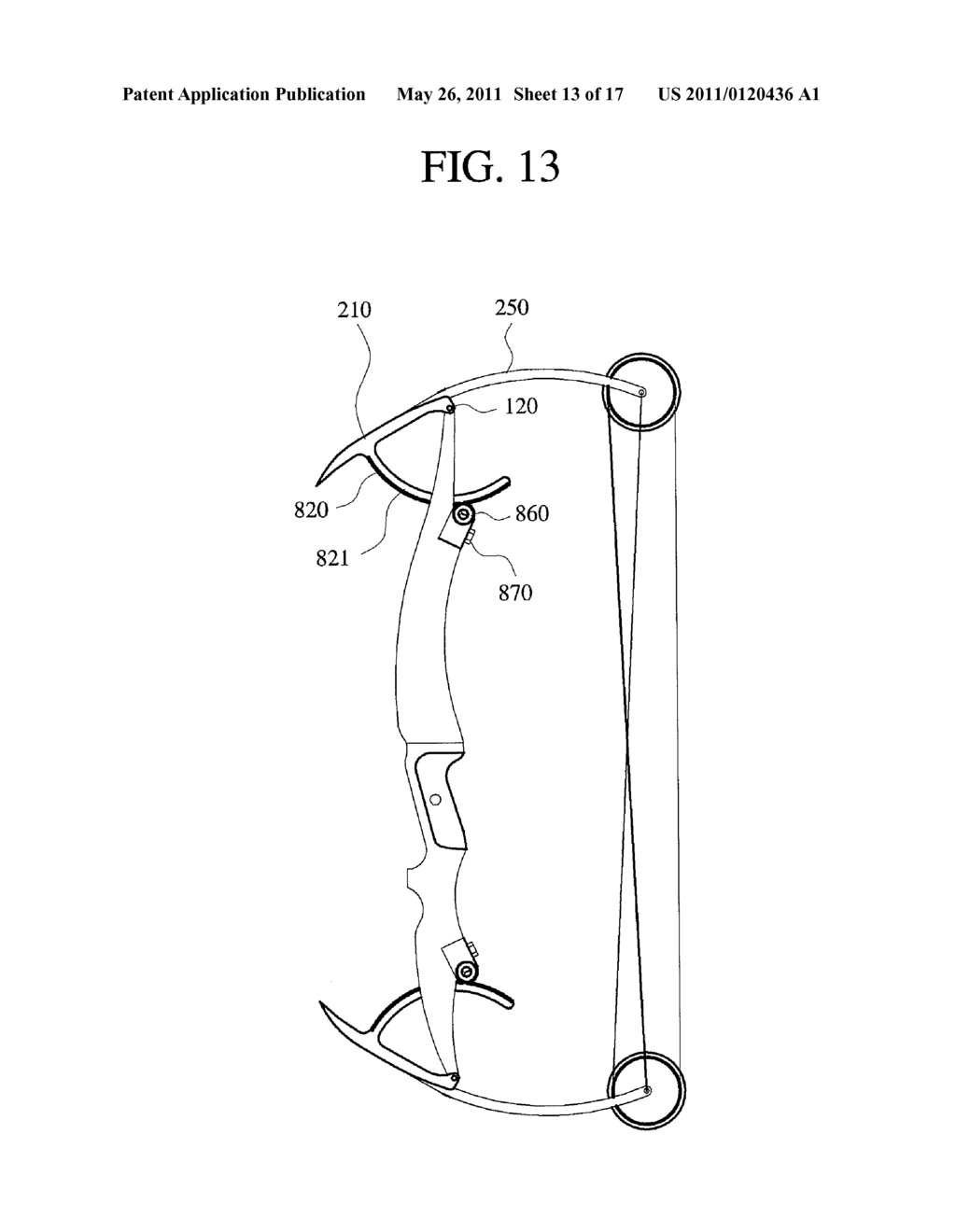Introduction

http://www.patentsencyclopedia.com/img/20110120436_14.png
Energy and work are at the heart of physics. They too lie
at the heart of archery. Archers do work to store potential
energy in the bow which then they direct and release
allowing it to be converted into kinetic energy in the
arrow. When at full draw an archer must continue to exert
force on the bow. Learning to manage this required force
while maintaining proper form and aiming can be challenging
to learn.
As stated earlier archery technology has come a long way. Modern equipment has found ways to reduce the amount of force required to do work on the bow and clever ways to store energy.
The compound bow has become popular for two reasons;
efficiency and ease. Compound bows use pulleys to conserve
work and total tension on the bow while reducing the force
from the archer required to maintain the bow at full draw.
This makes aiming and release easier to preform and preform
well without sacrificing performance in the hunting or
target sectors. In a limited sense the use of these "cams"
increase the distance over which the string can be moved by
swinging outward, and reduce the required pull by creating
multiple tensions on the bow.

Figure: Static
Force
This figure shows the relationship between draw length and force required to maintain static equilibrium at that draw length.Though the three bows in question all start and end in the same force, the effective draw weight for the compound is much greater but at full draw the force required is comparable to a lighter draw bow.http://margo.student.utwente.nl/sagi/artikel/bas/arch1.gif
